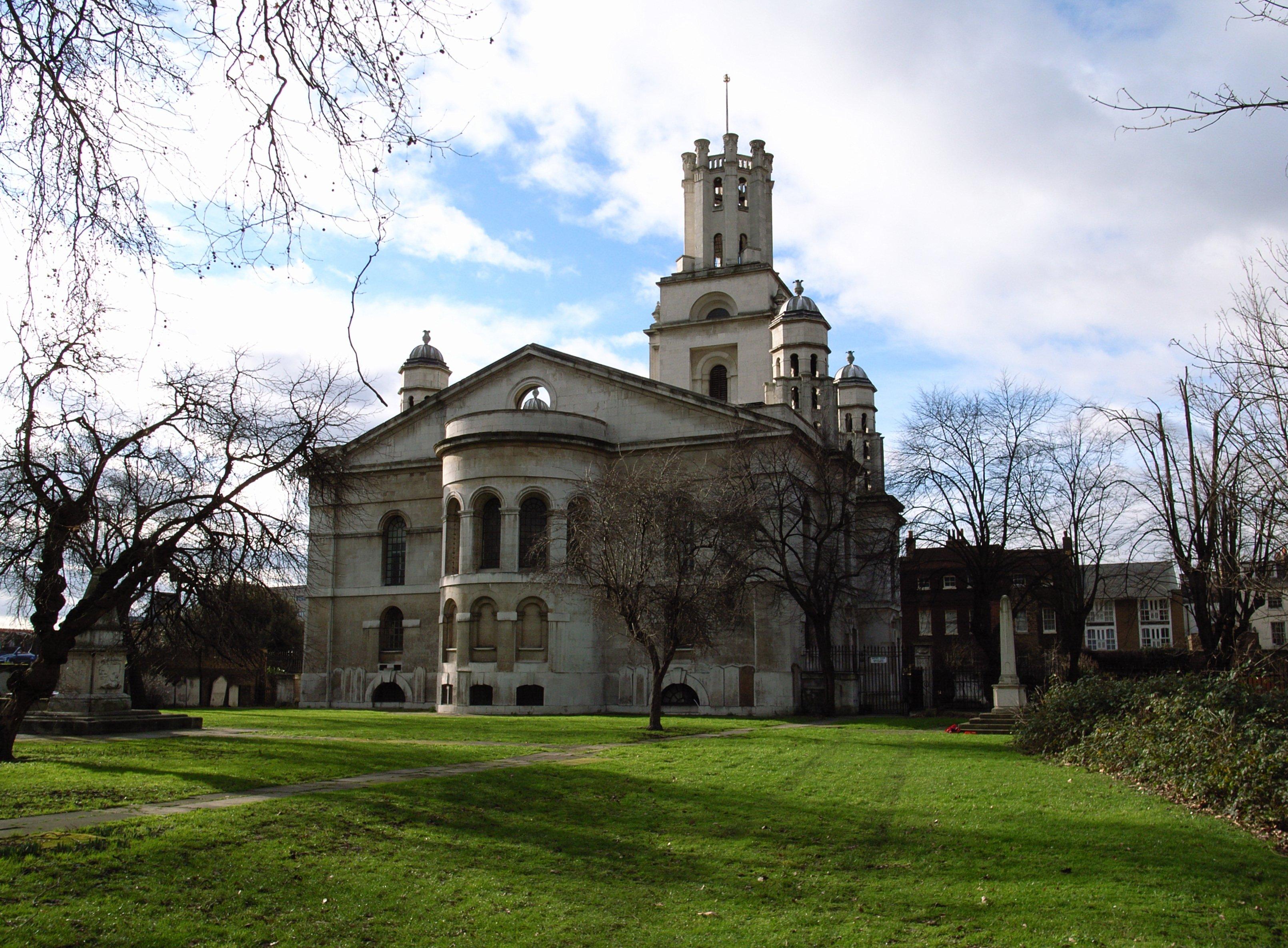St Paul
Shadwell, Greater London
Known as the church of Sea Captains due to the many mariners in the congregation, including Captain James Cook.

A strong and magnificent pile which commands the attention of all judicious observers, built and fitted out between 1714 and 1729, St George in the East was one of fifty new churches planned for London, although only twelve were completed.
Shadwell, Greater London
St George's has a uniquely complex skyline. As well as the western tower there are four 'pepperpot' turrets, each large enough to form the tower of an ordinary church. These had some practical excuse: each marks the position of a spiral staircase that originally led to the great galleries. There were no less than nine doorways into the church, with separate entrances for the different classes according to their ability to pay for better or worse seats.
In May 1941 St George's was severely damaged by an incendiary bomb during the Blitz, leaving only the outer walls, vestry, Lady Chapel, the 160 tower and all the turrets. All the interior was burnt, except for the still visible fire shattered fragments of the capitals of pilasters on the east and west walls. Legend has it that one pair of cherubic heads in the apse plasterwork survived the Blitz, the rest is a faithful replica of the original.
For a time, worship was conducted in the Rectory and Mission Hall, and then for seventeen years in a prefab within the shell, known as St George in the Ruins. After the Blitz, from 1942 the crypt was used as an air raid shelter, though space was limited: corridors went round the perimeter, leading into separate chambers where coffins were stacked on shelves. In the coming years, occasional crypt tours were organised, which young people remember as a scary experience.
What you see now is a paradox: within the proud Hawksmoor shell is a modest worship space, designed by Arthur Bailey and reconsecrated in 1964. It is approached from an open courtyard where the nave once was.
From there you enter a light, airy and prayerful space, focused on elements of the surviving semi circular apse, with a full height glazed window, good for looking both inwards and outwards. It is eminently 'fit for purpose', and many people find it an oasis of tranquility.
In 1909 Claude Hinscliffe (who had previously been curate at St George in the East) and his wife Gertrude founded the Church League for Women's Suffrage, which became the largest of several church based groups campaigning for votes for women.
As a landmark, it is more visible now than when it was surrounded to the west and south by other buildings which were levelled by the Blitz.
Shadwell, Greater London
Known as the church of Sea Captains due to the many mariners in the congregation, including Captain James Cook.
Whitechapel, Greater London
St George's has changed little since 1763, when it was established in the immigrant neighbourhood of Whitechapel by German refugees seeking religious asylum in London and working mainly in the sugar trade.
HM Tower of London, Greater London
Historical documents refer to St Peter's as a Royal Chapel as early as the 12th century, today it is a Chapel Royal and Royal Peculiar; directly under the jurisdiction of The Queen.